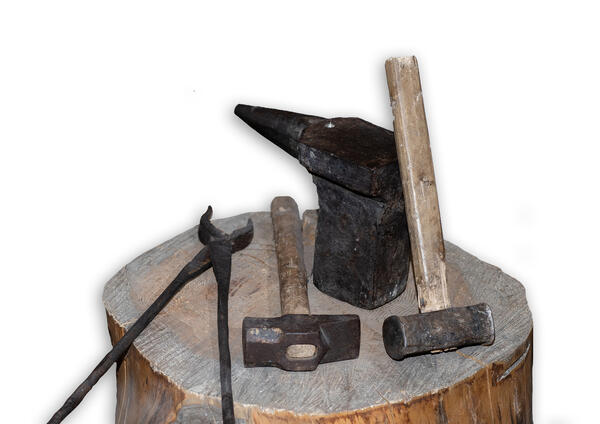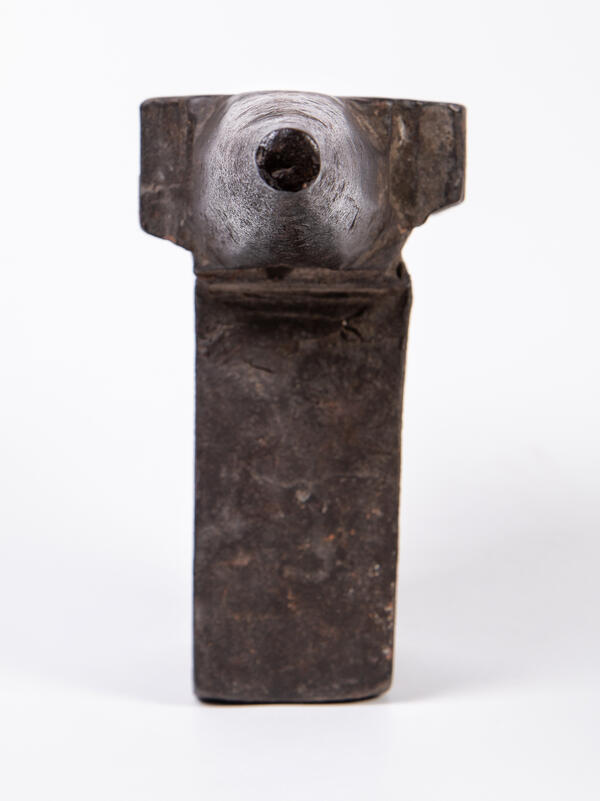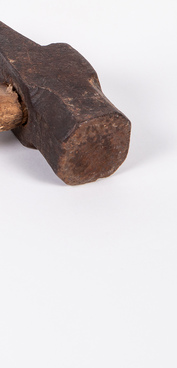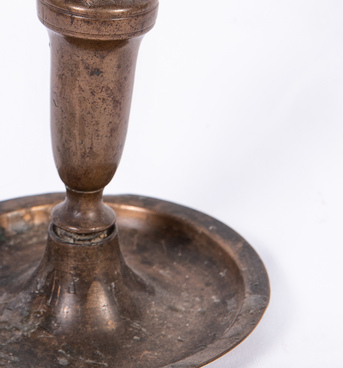In the center of the workshop there was usually a forge, and next to it there was an anvil upon which the metal objects were forged. The indispensable tools of a blacksmith are bellows, which were used to blow air to the fire, as well as a hammer, an anvil, pliers, and a vice. The materials used were various types of iron, steel, and sometimes copper sheets.
The anvil presented in the museum was made at the end of the 19th — the first half of the 20th century. This is the most important tool that makes it possible to perform various striking works associated with cold and hot forging of metal. Anvils come in different types: hornless, one-horned, and two-horned. A horn is a projection on the side of the tool. Its shape varies depending on its purpose. In one-horned models it is cone-shaped and is used in forming metal bends and rolling out rounded parts. The second horn is used in bending products at angles less than normal and is made in the shape of a truncated cone, and the opposite flat part (tail) is used for bending at right angles.
The upper surface of the anvil is called the face, and the lower surface is called the base. The top and casing must be hardened and polished, and have no cracks or dents, so that no marks remain on the hot workpiece. On the front surface of the anvil there is a square through hole for installing tools and accessories.
The first anvils were made of stone or stone slabs. Then metal anvils appeared — they were made of bronze, then wrought iron and finally steel, which is still used today.
If you have ever seen blacksmiths at work, you have probably noticed that most craftsmen lightly touch the face of the anvil a couple of times after striking the metal a few times. This action does not have any specific purpose. Blacksmiths touch the anvil to rest their hand or maintain rhythm while assessing the results of the last few strikes. In the first case, having the hammer next to the metal is just a convenient place. In this position, the distance to the workpiece is minimal. In the second case, some simply find it enjoyable to continue tapping their rhythm rather than stopping completely while they study the workpiece. However, they only lightly touch the anvil instead of hitting it, thus conserving energy.






